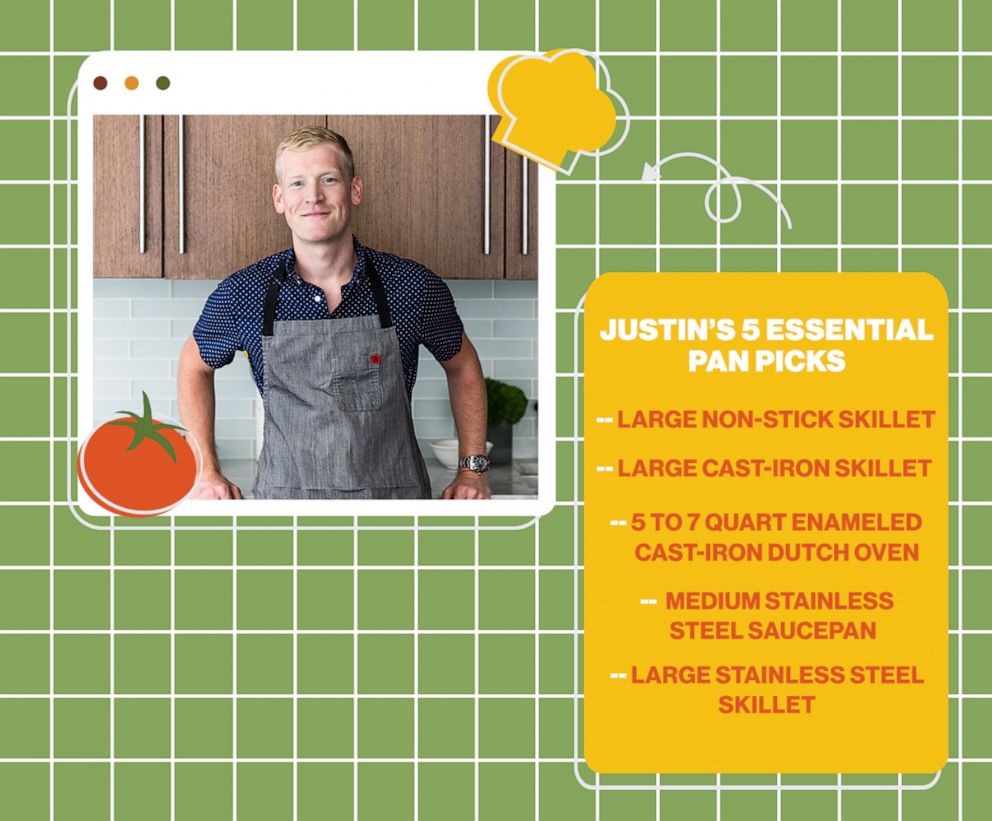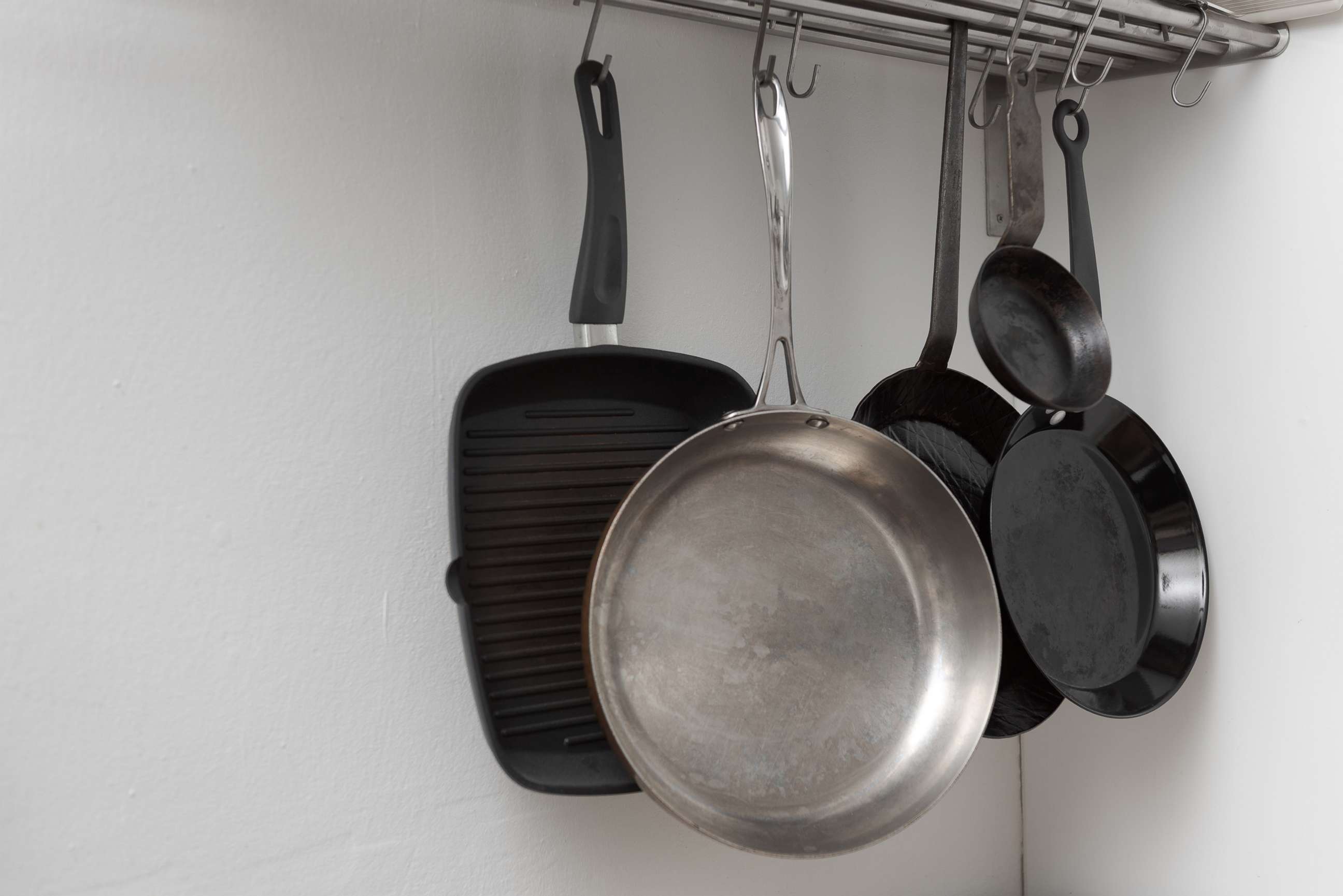Back to basics: 5 pans every home cook needs and how to use them
Justin Chapple, Food & Wine culinary director-at-large, shares his top picks.
Building confidence in the kitchen starts with two things: an eagerness to learn and the right equipment.
That's why "Good Morning America" Food is getting back to basics, we're enlisting culinary industry experts to help simplify the path to success in your kitchen.

To kick things off, Justin Chapple, author of "Just Cook It!" and culinary director-at-large for Food & Wine, shared his insights about the essential types of pans every home cook should have on hand.
Back to Basics: Pans
"There are endless cookware options these days and so many people think you need an enormous variety. But, really, you need very few to make most meals," Chapple explained. "If I had to narrow down my list of recommendations to five essential pieces, I'd suggest that every home cook have one large (10- to 12-inch) nonstick skillet, one large (10- to 12-inch) cast-iron skillet, one 5-to-7-quart enameled cast-iron Dutch oven, one medium stainless-steel saucepan and one large stainless-steel skillet. This variety will be most versatile."

Use This Pan For...
Nonstick skillet: Ideal for cooking all types of egg recipes -- fried eggs, frittatas, omelets -- and all foods that would benefit from the nonstick surface. I use mine for many fish recipes (salmon, scallops, cod) and even sauces that tend to stick to stainless.
Cast-Iron Skillet: This will be your go-to piece for anything you want to get a good sear on (chicken, pork, steak, etc). Plus, the more you use it, the better it'll treat you. When nicely seasoned, they can almost be nonstick themselves.
Enameled Cast-Iron Dutch Oven: I use mine almost every day. Not only will this be for soups and stews but braises and even deep-fried foods. The cast-iron retains heat and the enameled surface makes it almost nonstick. Anytime you need a big pot, this will do!
Medium saucepan: These come in handy for smaller jobs that require high-sided pans. Not just for sauces but also reheating soups or liquids or even boiling your eggs.
Stainless-steel skillet: You'll still want a stainless skillet for foods that want a good sear but where the recipes might include prolonged contact with acidic foods, such as tomatoes.
The Hercules of Pans
There are few things that all chefs, line cooks, test kitchen directors and home cooks would agree on -- but the durability and versatility of a cast-iron skillet is close to undisputed.
"For most people, a cast-iron skillet will be their workhorse," Chapple said. "Once it's well-seasoned, you can make almost anything in it, from eggs and pancakes to fish, stir-fries, pies, biscuits and more."
Hands-down, I use my cast-iron skillet and enameled cast-iron Dutch oven more than any other pieces.
What You Need to Know: Stainless Steel vs. Non-Stick

In Chapple's opinion, "many people buy non-stick pans because it's easy to clean when they should really be buying it for cooking foods that benefit from the surface."
Non-stick pans are "great for low-fat or low-heat cooking as nonstick pans often perform less when a lot of fat or high heat is used."
"Stainless on the other hand is great for high heat cooking and benefits from a decent amount of fat, which helps prevent sticking. They are way more durable than nonstick and promote browning, which adds flavor to your foods due to the Maillard reaction."
What about cast-iron? Chapple explained that the cookware will also promote browning, "but because it retains heat much better than stainless, it's great for low and high-heat cooking."
"Cast iron is great for sautéing, braising, roasting, baking and so many other types of cooking. It is truly versatile," he added.
Quality and Price Point: Make it make cents
"I always recommend that people buy the best they can afford," Chapple said. "But I do advise that it's probably best to buy fewer high-quality pieces than it is to buy a bunch of lesser-quality ones."
Have more questions? Tweet @GMA with the hashtag #GMAfoodforthought or tag @GMA on Instagram to share your pan success stories or ask the reporter for more advice.




